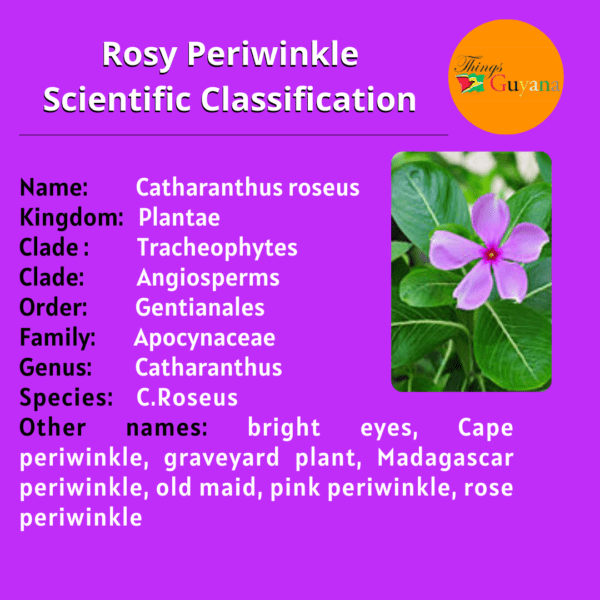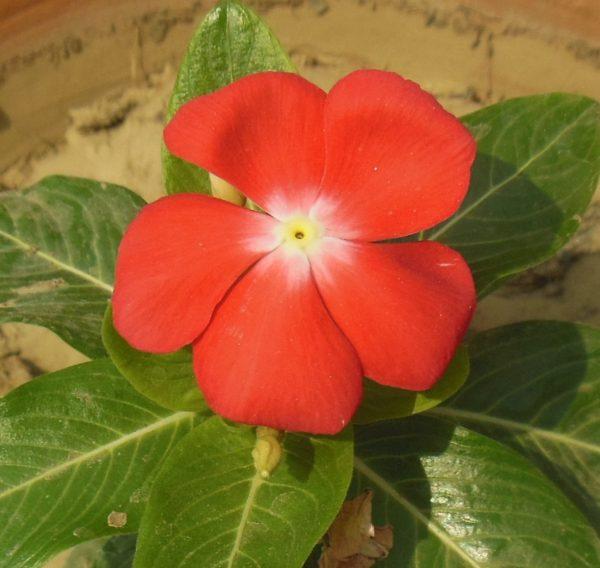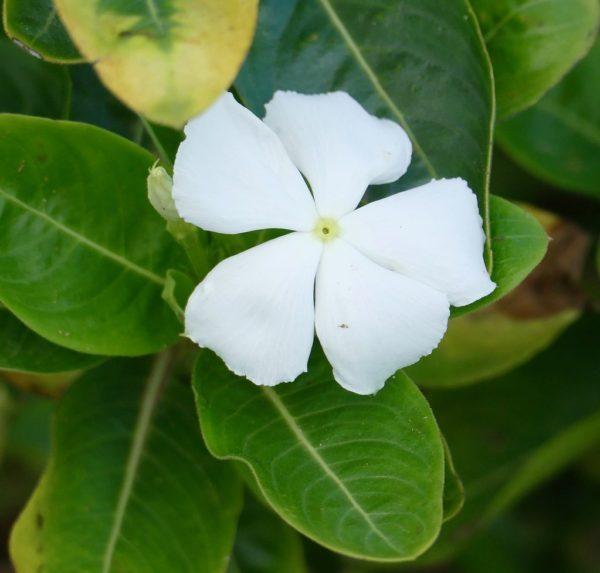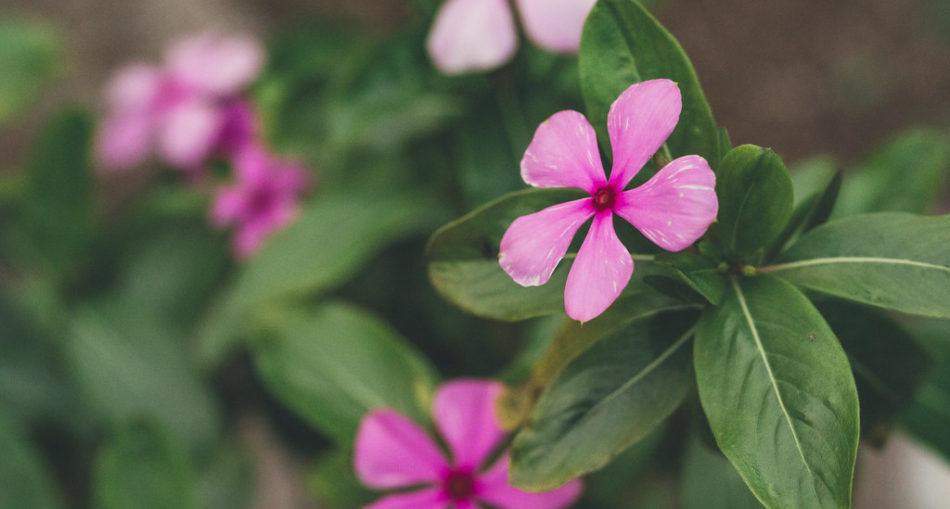Growing up I loved seeing these plants grow in our yard, I was also quite fond of picking them so that I could pull the petals off and paste them on handmade cards. I have always referred to these as ‘neverdone’ until I came across them in a book when I was around 12 years old and learned about their real name ‘Rosy Periwinkle’. Continue reading to learn more about these plants and their wide range of medical uses including cancer treatment.

Description
The rosy periwinkle produces attractive rosy-pink or white flowers measuring approximately 4cm across, with 5 wedge-shaped petals. These flowers have no fragrance. The plant can be seen reaching heights of up to 39 inches tall. The leaves of the plant are oval-shaped and flaunt a glossy green colour. The flowers can also be white with a yellow or red center and also dark pink with a red center.
Here are other colour variations of the Rosy Periwinkle

Photo of red periwinkle. Photo Source: https://commons.wikimedia.org/wiki/File:Catharanthus_roseus-Red_flowers_of_Madagascar_Periwinkle.JPG

Photo of white periwinkle. Photo Source: https://www.flickr.com/photos/berniedup/46592407504
Habitat
This plant is native to the country of Madagascar. It is however widely cultivated and is naturalized in subtropical and tropical areas of the world. A water-wise evergreen hardy perennial flourishing in neglected garden areas. Another name I remember calling this flower was ‘sand flower’ due to the fact that they can be seen growing mostly in sandy soil. These plants can emerge from any type of soil and can be easily grown.
Fun fact: The Madagascar periwinkle was first named Vinca rosea by the great Swedish botanist Carolus Linnaeus in the 1750s, but was reclassified and placed in the genus Catharanthus in 1834.
Uses
Traditional Uses Of Rosy Periwinkle
This plant has long been cultivated to be used in folk medicine, dating back to as far as 2600 BC Mesopotamia. Rosy periwinkle has historically been used topically to treat wasp stings in the Indian system of Ayurveda, diabetes, and malaria in traditional Chinese medicine, and diabetes in Jamaican folk medicine. The Jamaicans make a tea known as periwinkle tea. The plant contains up to 70 known alkaloids, many of which have medicinal properties. These compounds include the anti-cancer agents’ vinblastine and vincristine, as well as the blood pressure-lowering agent reserpine. Some compounds in rosy periwinkle have been shown to help regulate blood sugar, while others have been shown to help reduce high blood pressure. Other traditional uses of the plant include memory loss, circulatory disorders, and toothache.
Modern Research
This pretty plant from Madagascar gives us two very important cancer-fighting medicines: vinblastine and vincristine. Vincristine has helped increase the chance of surviving childhood leukemia from 10% to 90%, while vinblastine is used to treat Hodgkins’ Disease. There is still ongoing research to support the benefits of rosy periwinkle but it has also been approved by the FDA for chemotherapy treatment.
How To Grow Rosy Periwinkle
As stated before, these plants are quite easy to grow and can be grown in any soil type.
The plant thrives in ideal zones, in either partial shade or partial sun. The key is heat and dryness for a healthy, rosy periwinkle. It actually produces the best and most prolific flowers in poor soil, and excessively fertile soils can adversely affect the number of blooms.
Special Features Of Rosy Periwinkle
- Drought resistant
- Pot plant
- Attractive flowers
- Attractive leaves
- Attracts butterflies
Grow Tip: Do not overwater
References:
- https://edu.rsc.org/feature/africas-gift-to-the-world/2000064.article#:~:text=The%20Madagascar%20periwinkle%20was%20first,of%20this%20plant%20were%20realised.
- https://www.foxnews.com/health/rosy-periwinkle-a-life-saving-plant
- https://livingrainforest.org/learning-resources/rosy-periwinkle
- https://candide.com/ZA/plants/eaabf98455d9bdfef9c454fdb2e3cbae
- https://www.gardeningknowhow.com/ornamental/flowers/annual-vinca/madagascar-periwinkle-care.htm
Discover more from Things Guyana
Subscribe to get the latest posts sent to your email.







